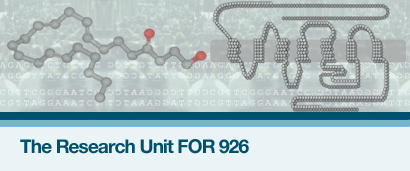Publications 2013
Piyanova A, Albayram O, Rossi CA, Farwanah H, Michel K, Nicotera P, Sandhoff K, Bilkei-Gorzo A. (2013). Loss of CB1 receptors leads to decreased cathepsin D levels and accelerated lipofuscin accumulation in the hippocampus. Mech Ageing Dev, 134(9):391-9.
 2013_Piyanova_MechAgeingDev
(1.2 MB)
2013_Piyanova_MechAgeingDev
(1.2 MB)
Pellkofer HL, Havla J, Hauer D, Schelling G, Azad SC, Kuempfel T, Magerl W, Huge V. (2013). The major brain endocannabinoid 2-AG controls neuropathic pain and mechanical hyperalgesia in patients with neuromyelitis optica. PLoS One, Aug 9;8(8):e71500. doi: 10.1371/journal.pone.0071500. eCollection 2013.
 2013-Pellkofer-PLoSONE
(650KB)
2013-Pellkofer-PLoSONE
(650KB)
Gustorff B, Sycha T, Lieba-Samal D, Rolke R, Treede RD, Magerl W. (2013). The pattern and time course of somatosensory changes in the human UVB sunburn model reveal the presence of peripheral and central sensitization. Pain,154(4):586-97.
 2013-Gustorff-PAIN
(1.0 MB)
2013-Gustorff-PAIN
(1.0 MB)
Wenzel D, Matthey M, Bindila L, Lerner R, Lutz B, Zimmer A, Fleischmann BK. (2013). Endocannabinoid anandamide mediates hypoxic pulmonary vasoconstriction. Proc Natl Acad Sci U S A. 110(46):18710-5.
 2013_Wenzel_PNAS
(1.0 MB)
2013_Wenzel_PNAS
(1.0 MB)
Bilkei-Gorzo A, Mauer D, Michel K, Zimmer A. (2013). Dynorphins regulate the strength of social memory. Neuropharmacology. 77:406-413.
 2013_Bilkei-Gorzo_Neuropharmacology
(1.6 MB)
2013_Bilkei-Gorzo_Neuropharmacology
(1.6 MB)
Gennequin B, Otte DM, Zimmer A. (2013). CRISPR/Cas-induced double-strand breaks boost the frequency of gene replacements for humanizing the mouse Cnr2 gene. Biochem Biophys Res Commun., 441:815-819.
Hoyer FF, Khoury M, Slomka H, Kebschull M, Lerner R, Lutz B, Schott H, Lütjohann D, Wojtalla A, Becker A, Zimmer A, Nickenig G. (2013). Inhibition of endocannabinoid-degrading enzyme fatty acid amide hydrolase increases atherosclerotic plaque vulnerability in mice. J Mol Cell Cardiol, 66:126-132.
 2013_Hoyer_JMolCellCardiol
(821KB)
2013_Hoyer_JMolCellCardiol
(821KB)
Klauke AL, Racz I, Pradier B, Markert A, Zimmer AM, Gertsch J, Zimmer A. (2013). The cannabinoid CB2 receptor-selective phytocannabinoid beta-caryophyllene exerts analgesic effects in mouse models of inflammatory and neuropathic pain. Eur Neuropsychopharmacol, 24(4):608-20.
 2013_Klauke_EurNeuropsychopharmacol
(2.3 MB)
2013_Klauke_EurNeuropsychopharmacol
(2.3 MB)
Ilayan E, Feliszek M, Malinowska B, Schlicker E. (2013). Do cannabinoids exhibit a tyramine-like effect? Naunyn Schmiedebergs Arch Pharmacol, 386(12):1041-6. doi: 10.1007/s00210-013-0903-y. Epub 2013 Jul 31.
 2013_Ilayan_Naunyn
(263KB)
2013_Ilayan_Naunyn
(263KB)
Siegmund SV, Wojtalla A, Schlosser M, Zimmer A, Singer MV. (2013). Fatty acid amide hydrolase but not monoacyl glycerol lipase controls cell death induced by the endocannabinoid 2-arachidonoyl glycerol in hepatic cell populations. Biochem Biophys Res Commun, 437(1):48-54.
Stumm C, Hiebel C, Hanstein R, Purrio M, Nagel H, Conrad A, Lutz B, Behl C, Clement AB. (2013). Cannabinoid receptor 1 deficiency in a mouse model of Alzheimer's disease leads to enhanced cognitive impairment despite of a reduction in amyloid deposition. Neurobiol Aging, 34:2574-2584. pii: S0197-4580(13)00240-6. doi:10.1016/j.neurobiolaging.2013.05.027. [Epub ahead of print]
 2013_Stumm_NeurobiolAging
(1.8 MB)
2013_Stumm_NeurobiolAging
(1.8 MB)
Gaffal E, Cron M, Glodde N, Bald T, Kuner R, Zimmer A, Lutz B, Tüting T. (2013). Cannabinoid 1 Receptors in Keratinocytes Modulate Proinflammatory Chemokine Secretion and Attenuate Contact Allergic Inflammation. J Immunol, 190(10):4929-36.
 2013_Gaffal_JImmunol
(1.3 MB)
2013_Gaffal_JImmunol
(1.3 MB)
Duerr GD, Heinemann JC, Dunkel S, Zimmer A, Lutz B, Lerner R, Roell W, Mellert F, Probst C, Esmailzadeh B, Welz A, Dewald O. (2013). Myocardial hypertrophy is associated with inflammation and activation of endocannabinoid system in patients with aortic valve stenosis. Life Sci, 92(20-21):976-83.
 2013_Duerr_LifeSciences
(1.5 MB)
2013_Duerr_LifeSciences
(1.5 MB)


